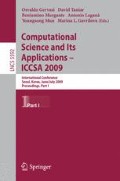Abstract
Research into the impacts of crime on health is relevant to adopting effective social policy and encouraging partnerships between local health and crime prevention agencies. Although it is not difficult to support the notion of crime as a threat to public health, the difficulty lies in quantifying the impact. Confounding effects of other influential variables (i.e. income, employment, housing) further complicate any analysis into the causal relationships between crime and health. An exploratory spatial data analysis approach was adopted in this study to examine the spatial relationships between crime, health, and quality of life indicators in Super Output Areas (SOAs) in Sheffield (UK). Quantitative methods of spatial data exploration and visualisation, and spatial autocorrelation analysis were used, based on aggregated secondary data drawn from census and crime databases. Statistical models of crime and health were specified, while taking into account the presence of spatial effects by applying spatial regression techniques.
Access this chapter
Tax calculation will be finalised at checkout
Purchases are for personal use only
Preview
Unable to display preview. Download preview PDF.
References
McManus, J., Mullett, D.: Better Health, Lower Crime: Briefing for NHS and Partner Agencies. Nacro, London (2001)
Office of the Deputy Prime Minister (ODPM): The English Indices of Deprivation 2004: Summary. Office of the Deputy Prime Minister, London (2004)
Anselin, L.: Exploring Spatial Data with GeoDa: A Workbook. Center for Spatially Integrated Social Science, University of Illinois, Urbana-Champaign (2005)
Moran, P.: The Interpretation of Statistical Maps. J. Roy. Stat. Soc. B 10, 243–251 (1948)
Anselin, L.: An Introduction to Spatial Autocorrelation Analysis with GeoDa. Center for Spatially Integrated Social Science. University of Illinois, Urbana-Champaign (2003)
Cliff, A., Ord, J.: Spatial Autocorrelation. Pion, London (1973)
Dubin, R.: Spatial Autocorrelation and Neighbourhood Quality. Reg. Sci. Urban Econ. 22, 433–452 (1992)
Land, K., McCall, P., Cohen, L.: Structural Covariates of Homicide Rates: Are There Any Invariances Across Time and Social Space? Am. J. Sociol. 95, 922–963 (1990)
Messner, S.F., Anselin, L.: Spatial Analyses of Homicide with Areal Data. In: Goodchild, M., Janelle, D. (eds.) Spatially Integrated Social Science, pp. 127–144. Oxford University Press, New York (2004)
Tiefelsdorf, M.: The Saddlepoint Approximation of Moran’s I and Local Moran’s I’s Reference Distributions and their Numerical Evaluation. Geog. Anal. 34, 187–206 (2002)
Ord, J., Getis, A.: Local Spatial Autocorrelation Statistics: Distributional Issues and An Application. Geog. Anal. 27, 286–306 (1995)
Cohen, J., Tita, G.: Diffusion in Homicide: Exploring a General Model for Detecting Spatial Diffusion Processes. J. Quant. Criminol. 15, 451–493 (1999)
Haining, R.P.: Spatial Data Analysis: Theory and Practice. Cambridge University Press, Cambridge (2003)
Morenoff, J., Sampson, R., Raudenbush, S.: Neighborhood Inequality, Collective Efficacy, and the Spatial Dynamics of Urban Violence. Criminol. 39, 517–560 (2001)
Author information
Authors and Affiliations
Editor information
Editors and Affiliations
Rights and permissions
Copyright information
© 2009 Springer-Verlag Berlin Heidelberg
About this paper
Cite this paper
Tan, SY., Haining, R. (2009). An Urban Study of Crime and Health Using an Exploratory Spatial Data Analysis Approach. In: Gervasi, O., Taniar, D., Murgante, B., Laganà, A., Mun, Y., Gavrilova, M.L. (eds) Computational Science and Its Applications – ICCSA 2009. ICCSA 2009. Lecture Notes in Computer Science, vol 5592. Springer, Berlin, Heidelberg. https://doi.org/10.1007/978-3-642-02454-2_19
Download citation
DOI: https://doi.org/10.1007/978-3-642-02454-2_19
Publisher Name: Springer, Berlin, Heidelberg
Print ISBN: 978-3-642-02453-5
Online ISBN: 978-3-642-02454-2
eBook Packages: Computer ScienceComputer Science (R0)

